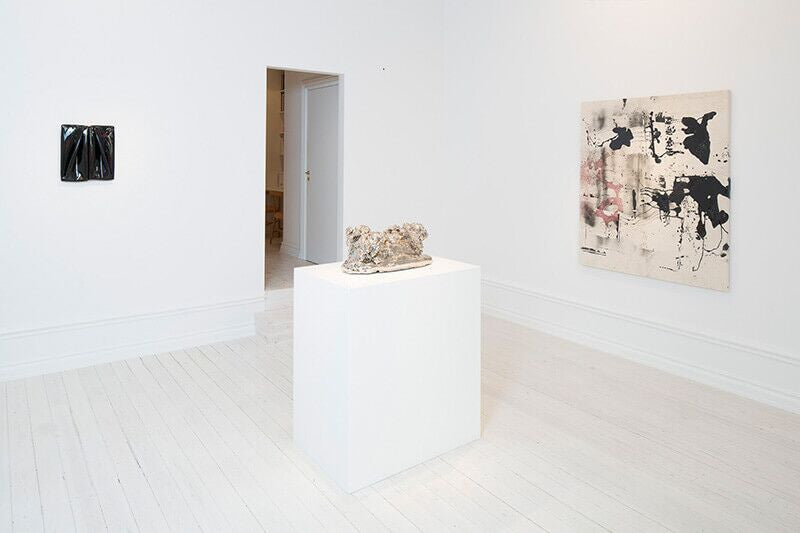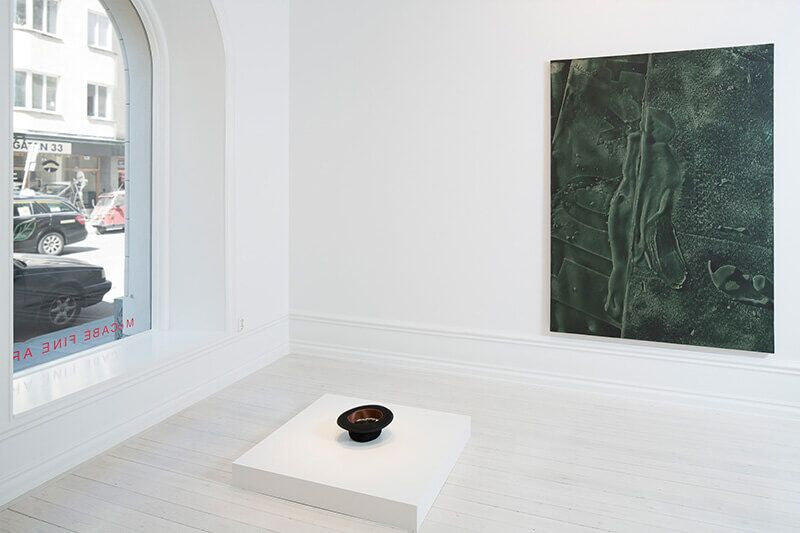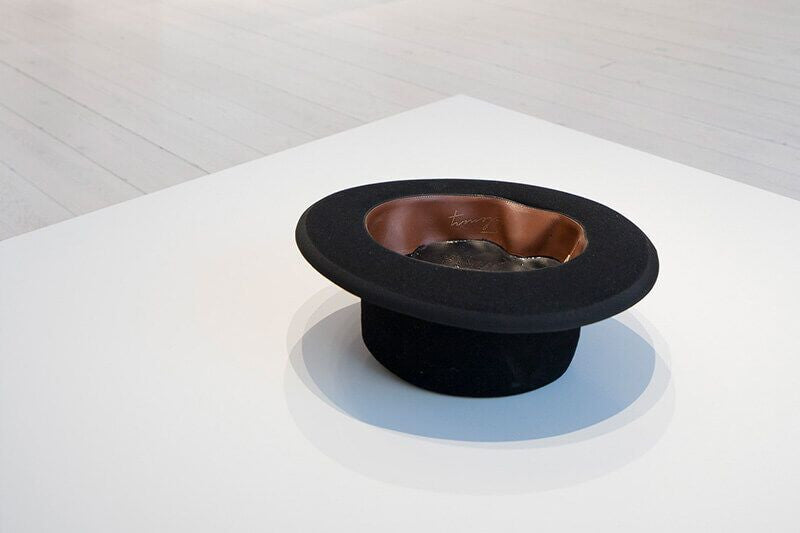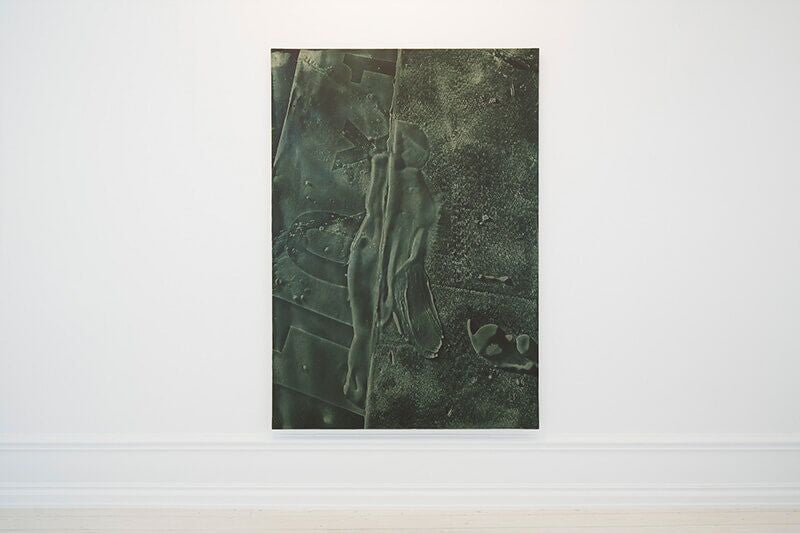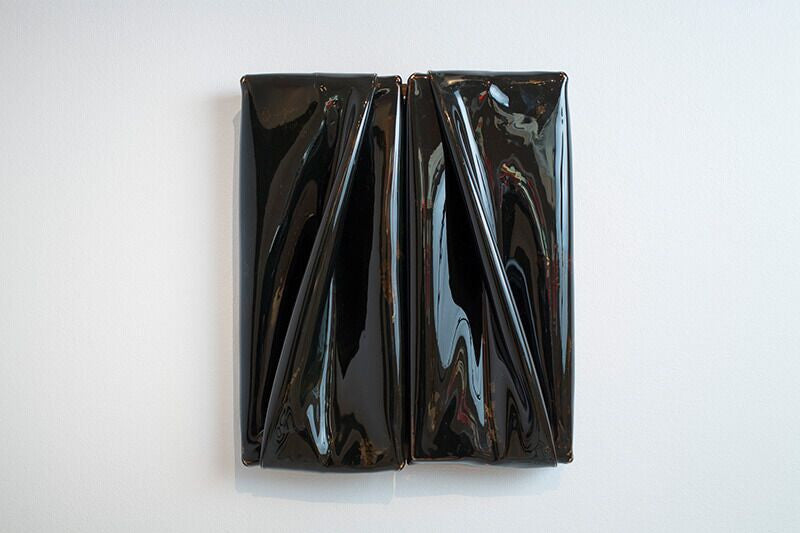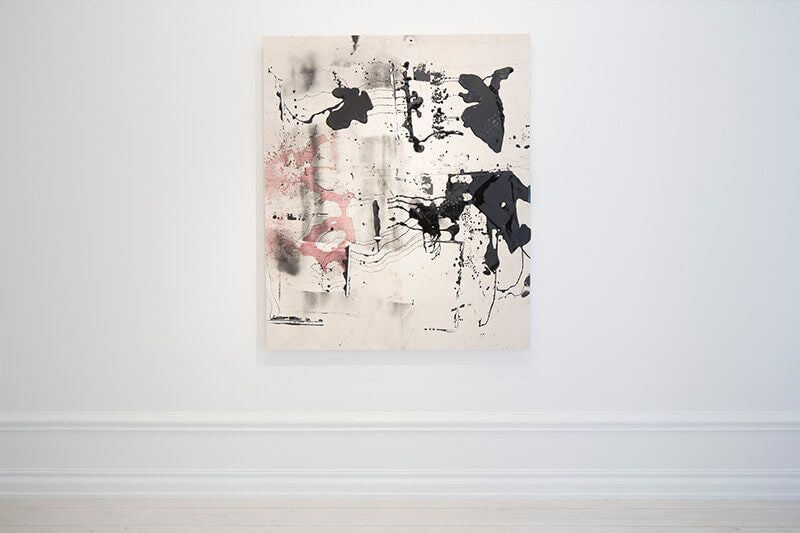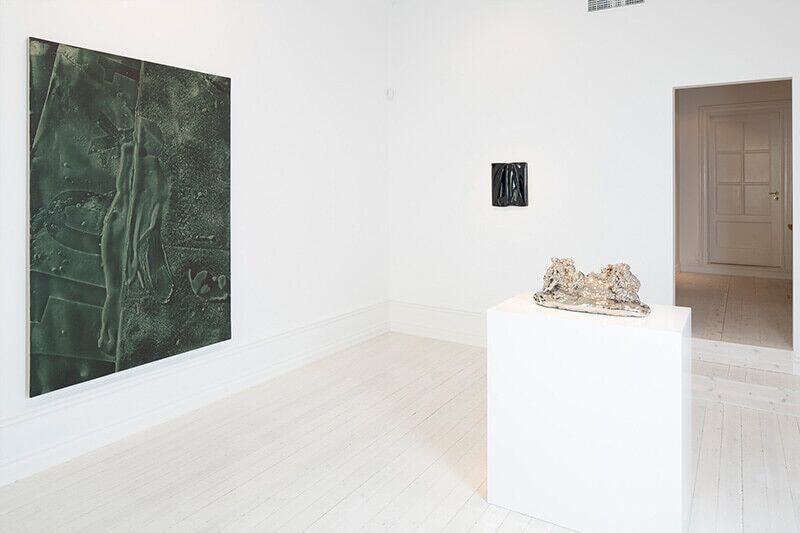DRIP DROP THUD
Stockholm: June 11 - July 11, 2015
Press Release:
McCabe Fine Art is pleased to present Drip Drop Thud, a group exhibition featuring works by Latifa Echakhch, Daniel Lefcourt, Nate Lowman, Daniel Turner and Rosemarie Trockel.
The works on view are united in that they all emerge from transformative methods, often combining liquid and solid states in their technical production. While most paintings and some sculpture start with liquid (or semi-liquid) materials that harden into the final artwork, the works in this exhibition intentionally play with the idea of transformation, offering a nuanced and complicated understanding of the artists’ processes and concepts. What makes this selection of artworks compelling is the way that each work simultaneously embodies two seemingly opposite states—as physical objects as well as in terms of the technical means by which they are made.
By questioning cultural paradigms, archetypes, and artifacts, Moroccan-born Swiss-based artist Latifa Echakhch strives to generate what she calls “poetic transfiguration.” Her metamorphic artistic process can bring about a change in an object’s form or meaning. Chapeau d’encre (2011) is a surrealist object, or assemblage, juxtaposing unexpected things to lend new meanings to stereotypical objects. A hat filled with Indian ink should be soaked through, but upon closer inspection, the ink appears hardened into a gel-like state.
Brooklyn-based artist Daniel Turner is interested in transformation and transfiguration in terms of alchemy. His work 5150 (1/10/12) (2012) deals with liquid trapped in a state of transformation. In this series of works, he seals bitumen—a thick substance made of decomposed organic material that is typically used to surface roads and roofs—between two pieces of transparent vinyl. Sealed between the vinyl sheets, the bitumen emulsion never fully solidifies, remaining trapped somewhere between liquid and solid states.
At first glance, New York-based artist Daniel Lefcourt’s Cast series appears to show a fluid microscopic world teeming with microorganisms. However, a closer look reveals numbers and letters layered within the enlarged landscape. Starting with a studio accident—a spill, for instance—Lefcourt uses various techniques of magnification and replication to transform paint splatters and puddles into art objects. He photographs his source material from numerous angles and perspectives with a macro lens digital camera. Documenting three-dimensional space in a two-dimensional photograph, the artist then returns to three dimensions by using the photographs to produce a digital rendering that is output into a low-relief mold carved from foam. In a final step, Lefcourt coats the mold with industrial paint pigment PBK31 (perylene green-black) which he peels off and applies to a canvas substrate (returning, finally, to a two-dimensional state).
In his series of drop cloth paintings, fellow New York artist Nate Lowman transforms elements from one state to another, going back and forth between the floor and the wall. He creates wall-mounted paintings out of drop clothes from the floor of his studio and the studios of other artists. When placed on stretchers and hung on the wall, dirt, spilt wine, paint drippings and other such residue and detritus tracked into the studio are transformed into a work of fine art. This process mirrors the way the artist repurposes pop culture and consumer culture icons—the detritus of our capitalist society—in his artistic practice.
The complex artistic output of German artist Rosemarie Trockel began in the 1970s and spans from knitted works to paintings and sculpture. Trockel is known for integrating materials and processes that are traditionally viewed as opposites while simultaneously questioning these artificial divisions and the hierarchies they can support. Mixing craft with high art, Trockel’s ceramic works reference domesticity and thus describe a traditionally female realm. Ceramics are delicate and fragile, qualities that are traditionally thought of as feminine. However Trockel’s untitled ceramic work included in this exhibition is glazed with platinum, a hard durable material that creates a contrast between the interior and exterior layers of the work. The hand-sculpted ceramic interior, which bears traces of the artist’s own hand, contrasts with the highly reflective exterior, which gives an impression of an industrial object. The slick finish and handmade process are at odds, as are the object’s organic and fluid shape and its machine-like surface. Although it is made from ceramic, Trockel’s untitled work looks more like a pile of oozing platinum ready to drip over the edge of its plinth and drop to the floor with a thud as we realize it is in fact solid.
McCabe Fine Art
Noted art advisor, dealer and collector, Paul Frank McCabe, opened McCabe Fine Art in Stockholm, Sweden in 2013. An extension of his eighteen years of art market experience and connoisseurship, the beautifully renovated showroom in central Östermalm presents works by modern and contemporary masters as well as emerging talents. Through a program of curated, thematic and monographic exhibitions, McCabe Fine Art brings new voices to Scandinavia’s dynamic international art scene.
For more information, please contact us at paul@mccabefineart.com or +46 (0)709 99 77 46.


